Boise needs more public restrooms. The proposed spot for one has divided a neighborhood
In a quiet, tucked-away corner of Boise sits C.W. Moore Park. It’s one of the few downtown parks that truly feels like a “neighborhood park.”
The 0.2-acre space at 150 S. 5th St. is frequented by residents and employees of the surrounding apartments and businesses. Preschoolers from a nearby school often play tag or splash in a stream of water that runs into a canal.
This park could be about to get a restroom. People have strong feelings about it.
Some residents are decrying the proposal as an intrusion, saying it will bring crime, drugs and a just plain ugly installment to their little slice of urban peace.
But the city has plans for this forgotten end of downtown. Officials said the area will soon expand, and infrastructure — like restrooms — will become more important than ever.
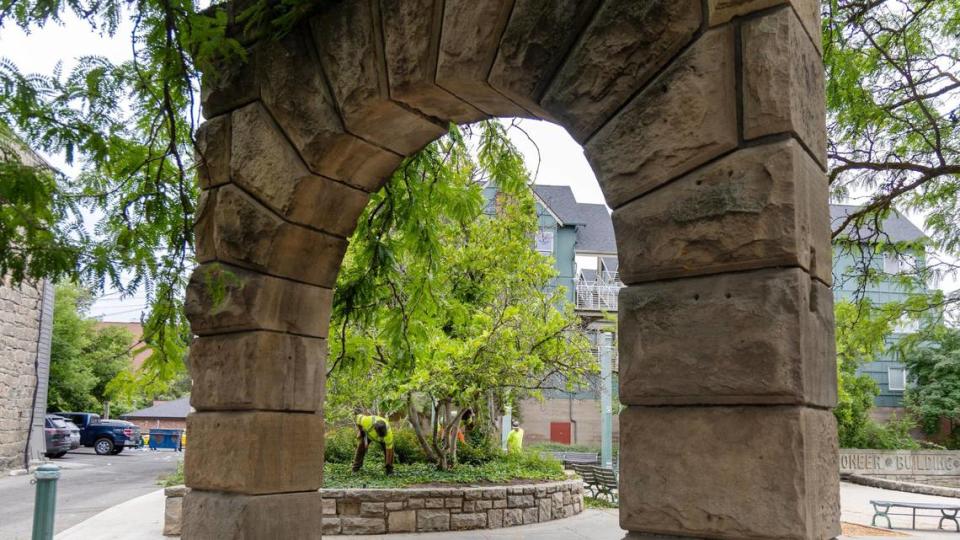
Famous restroom model comes to Boise
The restroom would be a “Portland Loo,” a model designed by Madden Fabrication with the help of the city of Portland that has since been put into service in cities across the country. The same model can be found in Cherie Buckner-Webb Park, another city park at the corner of 11th and West Bannock streets, 0.7 miles from C.W. Moore.
“The Portland Loo is designed specifically to prevent problems that are commonly experienced with public toilets,” the brand’s website states. “The sleek and modern kiosk discourages crime with graffiti-proof wall panels and open grating. And, they’re easy to clean, with commonly used components that are easy to replace or upgrade.”
The bare-bones design consists of a metal structure over 8 feet high, nearly 10 feet long and 6 feet wide. It will include a space for needle disposal.
The Boise Parks and Recreation Department estimated the purchase and installation to cost $350,000, according to department superintendent Sara Arkle. One reason the city is pushing it now is an opportunity to pay for it with a federal community development block grant, Arkle said.
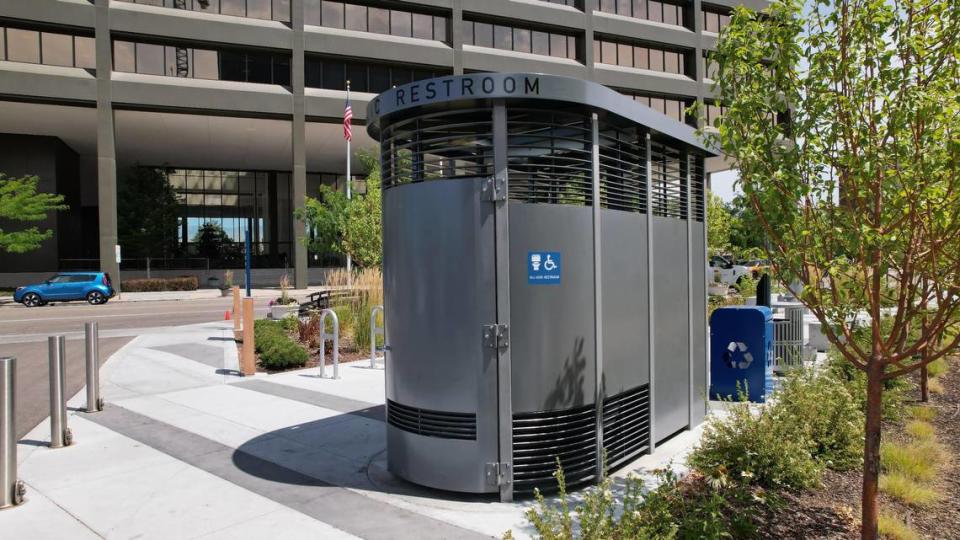
City says restroom is needed
C.W. Moore Park is a reservable event space one block southeast of the Basque Block, which sees large annual events like the Basque Festival. It’s also in an area that could soon see significant growth, with festival streets planned and Boise’s urban renewal agency building another park on the block diagonal from C.W. Moore at 521 W. Grove Street.
Arkle noted that, despite these expected influxes of people to the area, there are no restrooms in the immediate vicinity. The closest public restrooms are three blocks away in the Grove Plaza.
“Our mayor has an initiative and a goal of creating a city for everyone, and some of our most basic needs must be serviced in order to meet that goal,” Arkle told the Idaho Statesman by phone. “Public restroom facilities are one of those basic needs in that part of town.”
Local businesses support the addition, according to Jennifer Hensley, executive director of the nonprofit Boise Downtown Association. The association, whose members include local businesses and property owners, seeks to help the downtown economy succeed.
A 2021 survey that received more than 2,700 responses asked Treasure Valley residents what they thought was missing from downtown Boise. One of the “biggest asks” was for more public restrooms.
“You can get really stuck down here, especially if you’re a family with little kids or seniors,” Hensley said by phone.
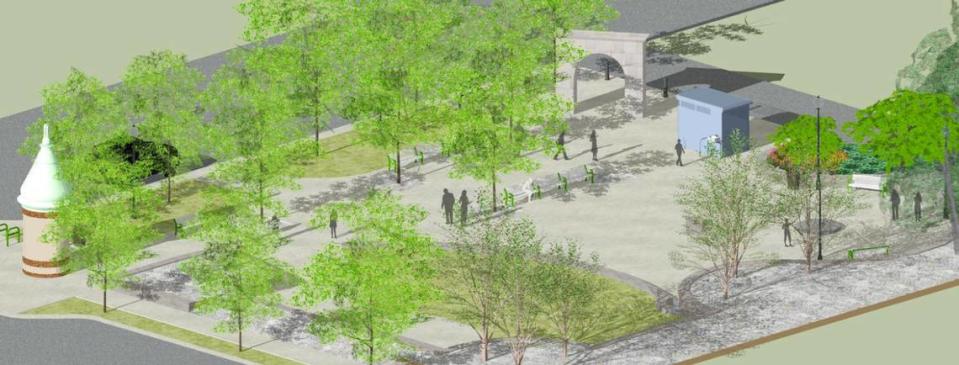
Hensley said she has heard “quite a bit” from businesses complaining about having to clean up after people relieving themselves on front stoops or behind buildings, especially after weekends when people stay late at bars in the area.
“It’s going to be harder and harder as our population grows, as the number of people who use our downtown increases, to keep it clean if people don’t have a place to use the restroom,” Hensley said.
Some residents contacted the city to encourage its construction.
“I love this park,” Bruce Mastorovich, a resident of C.W. Moore Apartments, located on the same block as the park, wrote to the city. ”Part of its charm is that it feels enclosed from the surrounding streets. The water wheel, the trees, and the adjacent buildings block out much of the street traffic. It’s very peaceful. Placing the restroom near the road would be a feature, rather than a bug, as it would be yet another barrier from the outside world.”
John Stevens, who owns a condo in the Belgravia Building adjacent to the park and said he has worked across from it at C.W. Moore Plaza for 20 years, expressed “strong support” as well.
“I watch schoolchildren play at the park with their teachers,” Stevens wrote in an email. “Customer and tenants of nearby commercial properties appropriately use and enjoy the park. For the enjoyment and relief of users of the park, this restroom is necessary and overdue.”
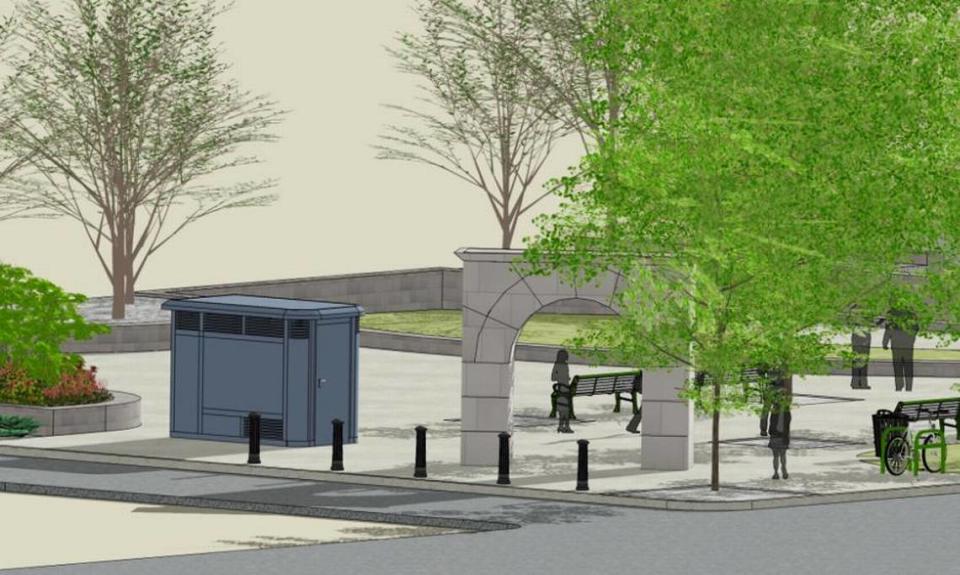
Questions over historic character
The park is part of the Old Boise Blocks, which consist of eight city blocks along the east end of Grove Street that played a prominent role in Boise’s past. These blocks are zoned under a “historic overlay,” meaning the Historic Preservation Commission must approve the project. The committee initially approved the restroom in February but later received an appeal from the Belgravia in Old Boise Condominiums Association.
At an appeal hearing in May, the appellants and other park users expressed two concerns: a change in the park’s character, and crime.
C.W. Moore Park is home to several architectural artifacts saved from Boise buildings demolished by urban renewal in the 1970s, such as the Bush Building Entrance Arch and the Morris Hill Cemetery Waterwheel.
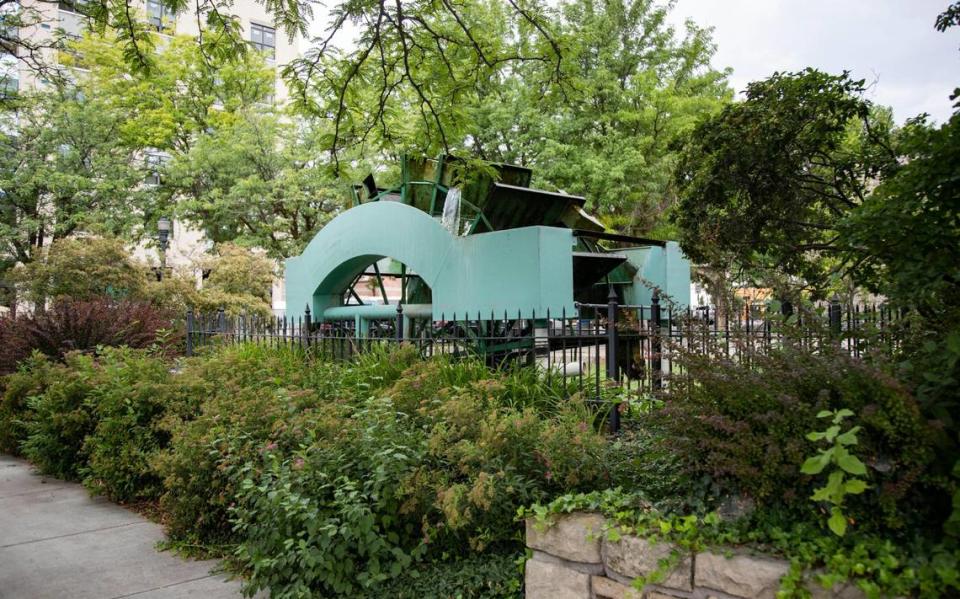
At the hearing, people said they feared the modern restroom would detract from the historic theme.
“There are no other places in Boise like C.W. Moore, which serves as a living monument to so much that has changed in our community over the years,” said Stanford McConnehey, a Northwest Boise resident who spends time there.
They were also upset that the department wanted to remove three magnolia trees to make room for the restroom. The parks department said it intends to plant new trees to replace them, at least one of which would be in C.W. Moore Park.
“If the city wanted to prioritize public restroom access, we would pour money and energy into a well-thought-out plan that doesn’t threaten the historic nature of our already diminishing open spaces or our extremely precious tree canopy,” McConnehey said.
Residents worry about crime
Part of the appeal of this location is the “natural surveillance” provided by residents and the openness of the area, according to city filings. Officials said they hoped the space’s lack of privacy would prevent crime from occurring — the same reason the model was designed with open slats at the top and bottom, according to Arkle.
“We do have issues in some of our restrooms where people will kind of camp in the restroom and not allow members of the public to utilize it,” Arkle said.
Multiple condo owners said they worried the restroom would attract more people experiencing homelessness.
“C.W. Moore has a history of attracting a transient population because of its secluded nature,” Matthew Reese, a board member of the Belgravia Building, said at the hearing. “I see the tents, the sleeping bags, the trash, the drug needles. The one thing I have observed is when these activities are present in the park, nobody else will use the park.”
Park officials acknowledged in city filings that park restrooms, including the one in Cherie Buckner Park, can fall prey to broken locks, stopped-up toilets, graffiti and frozen pipes. Jason Miller, a project manager with the parks department, said his staff has a proven track record of promptly dealing with such problems.
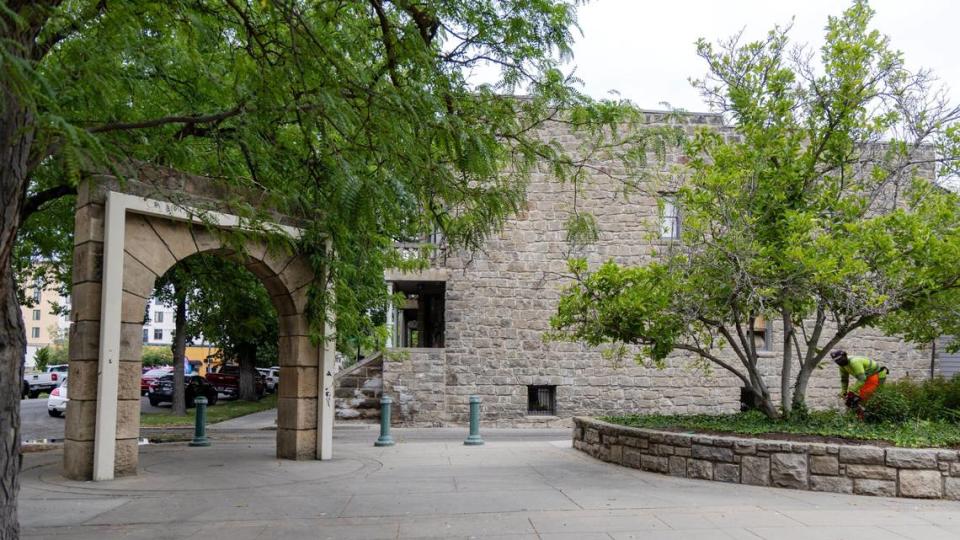
Appeal heads to the City Council
After listening to hearing testimony, the Historic Preservation Commission voted unanimously to deny the appeal. Commission members spoke out against the suggestions that a restroom would detract from its historic elements and attract crime.
In response to a comment from McConnehey that the park was like a museum, commission member Jillana Moroney said, “museums have bathrooms.”
Cindy Montoto, commission co-chair, rebutted the idea that the restroom would bring added dangers.
“Being the mother of a child that uses this park daily, it’s more of a safety risk to have my kid hopped across four different streets multiple times to go back to use the restroom at school,” Montoto said
The commission’s denial allowed the opponents to appeal to the City Council. The council plans to hear them at its 6 p.m. Tuesday, Aug. 29, meeting at City Hall.

